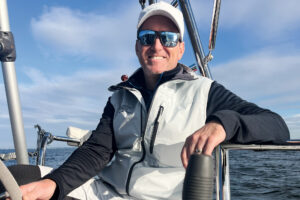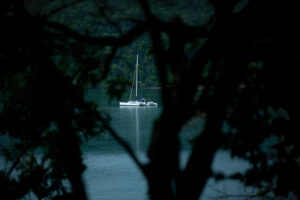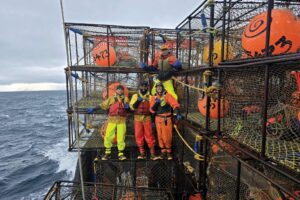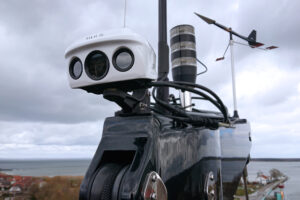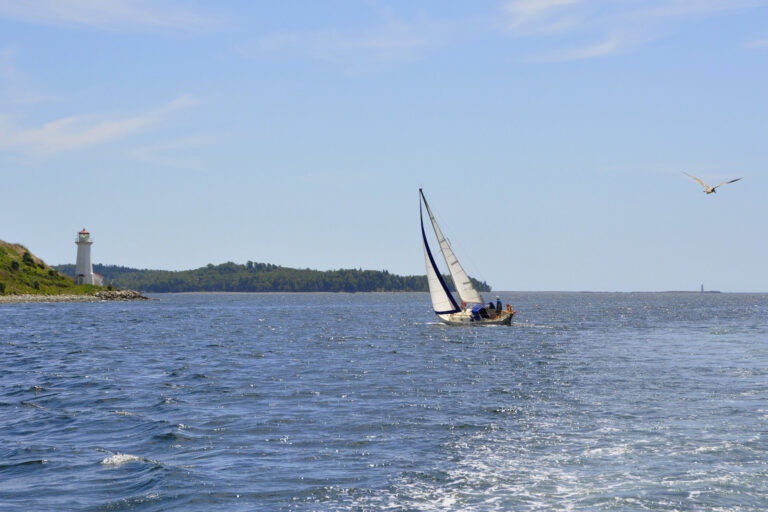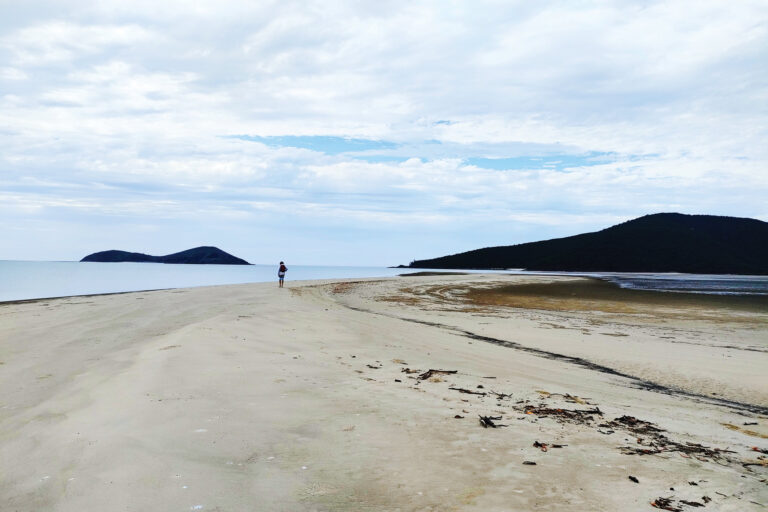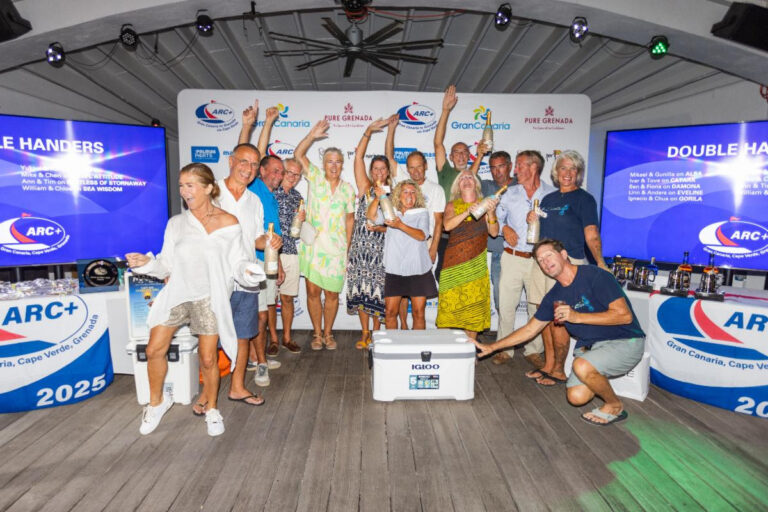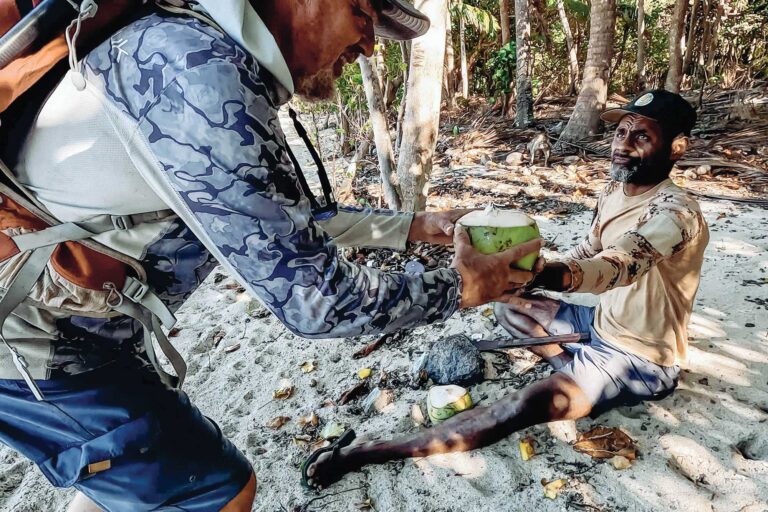
The Tuamotu Archipelago was one of the destinations my partner, Micha, and I had been looking forward to the most on our circumnavigation route aboard Pantagruel, our classic 60-foot yawl. Sailing in this remote part of the world, alone among a few scattered atolls, with the great blue expanse of the South Pacific Ocean all around us, was what I’d visualized when I thought of the trip.
There are around 80 islands and atolls making up the Tuamotus, which originally formed from volcanoes that rose up high above sea level. Coral then grew around the perimeter and was left behind when the land eventually sank back into the sea, leaving a circular coral rim dotted with palm-tree-sprinkled motus (a Polynesian word meaning small island or coral islets), surrounding a lovely large lagoon of turquoise water.
These atolls were a dramatic contrast to our previous stop in French Polynesia, the lush, green and mountainous Marquesas. The Tuamotu archipelago is the oldest of the five French Polynesian island groups, and would have also once resembled the geography of the Marquesas (the youngest of the group) whose mountains will likely also eventually recede into the ocean floor, becoming atolls themselves. Unlike the islands in the Marquesas, whose misty peaks rise high out of the seabed and can be spotted from 40 miles away, we were lucky to spot the atolls of the Tuamotus from 10 miles. Our first view was a dotted line of palm trees poking up out of the swell, the mirage effect making it look like they were floating in the air.
The road to this paradise, however, is not as straightforward as one might wish for from a cruising ground. For a start, the area is not well-charted. Not all the atolls have navigable passes into their lagoons, and the ones that do should still be treated with care as they can involve strong currents and tricky navigation. We really didn’t know what to expect approaching these islands for the first time and definitely wanted to navigate the passes by daylight.
We arrived at Raroia just after sunrise at a time we’d hoped would coincide with slack water. On approaching the pass on the western side, sighting the rippled water ahead and water rushing out, we realized we were late (or early!). The wind was very light so we continued cautiously, knowing that if it got too rough we could turn tail and head back out into open water. We encountered a 500-meter stretch of short choppy waves with between 2 and 4 knots of current against us, giving way to completely flat water in the lagoon.
Our battle wasn’t over yet. Micha and I wanted to anchor on the eastern side of the atoll, where we could seek protection from the easterly wind behind the motus and where there would be the least fetch if the wind picked up. However, between us and our chosen anchorage could be any number of unchartered patches of shallow coral heads.
It took about two hours to motor across the lagoon — slowly so we could keep a good lookout — slicing our path through the mirrorlike water. The islands and palm trees on the other side six miles away appeared to be floating in midair, with some white flashes in between, which we later realized were waves breaking on the outside of the reef on the other side of the atoll. We kept a good lookout on the bow and perched on steps halfway up our shrouds.
We dropped our anchor and watched it sink to the bottom 6 meters below us in perfect clarity. In front of us were a few scattered motus, some with dense foliage and others with just a lump of yellow sand and one lonely palm, looking exactly like the kind of picture you might have drawn of a desert island as a child.
We relaxed, snorkeled and swam ashore to admire the Kon Tiki monument erected in commemoration of Thor Heyerdahl’s expedition, which ended at this spot. Everywhere we went, we watched the black and white tips of reef sharks darting about among the shallows. When we stopped to listen, there was real peace and quiet, with only the faint sound of the waves crashing on the outside of the reef.

